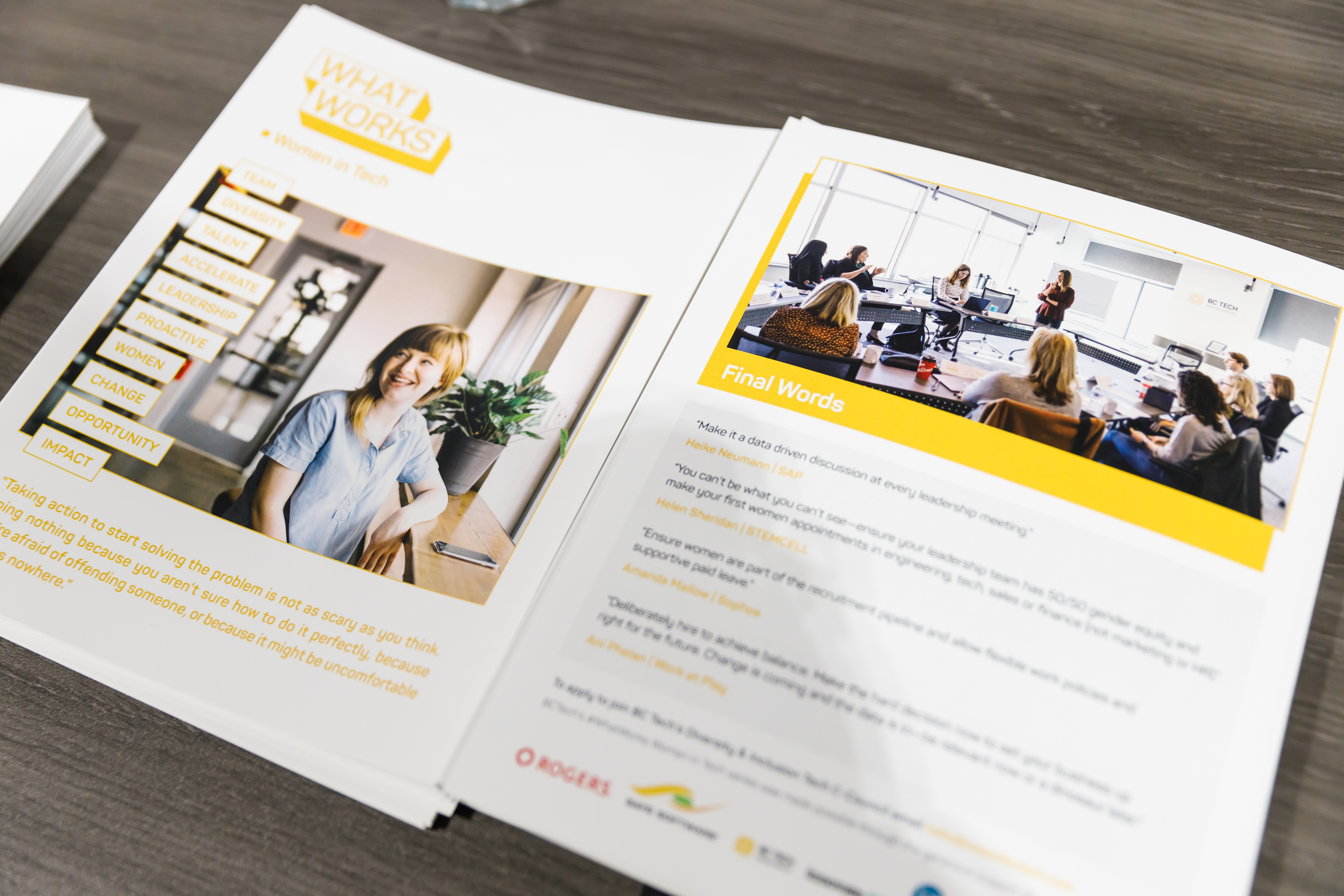The ‘Tech Personality’ – and what it means for women in tech.
 By The ‘Tech Personality’ – and what it means for women in tech.
By The ‘Tech Personality’ – and what it means for women in tech.
December 17, 2019

While the tech industry has made efforts to promote gender diversity and inclusivity, women still experience hurdles due to entrenched biases in workplace culture. The impact in British Columbia is clear, where women make up only 18% of the tech workforce.
David Hargreaves, Vice President of Strategy & Business Development, Seaspan spoke about these biases as part of BC Tech Association’s #WhatWorks Series, aimed at moving the dial on women in tech. As a women-led business, Switchboard is proud to have sponsored the series and was eager to learn.
David has been in the technology sector for over 25 years in a wide variety of roles. Prior to Seaspan, David worked in management, strategy and business development roles with MDA, one of Canada’s leading technology companies. He was responsible for leading diverse businesses, driving numerous growth initiatives and executing business pursuits both in Canada and around the world.
David’s experience in the tech sector has given him great insight into how personality characteristics can play out in the workplace. His talk focused on various biases that may work against women, and how we can be more cognisant of them. In this post, I discuss one point that resonated with us – the ‘tech personality’ type, and how women in tech careers can leverage this knowledge to navigate unpleasant workplace interactions.
The Tech Personality Type
Based on the Myers-Briggs Type Indicator Assessment, the ‘tech personality’ is often categorized as INTJ. If you are not familiar with the Myers-Briggs personality types, the framework approaches personalities based on 4 criteria:
- Directing And Receiving Energy
- Taking in Information
- Making Decisions
- Approaching The Outside World
Within each criterion, personalities are given an evaluation on a dichotomous scale. Results are as follows:
- Introversion/Extraversion (“I”/ “E”): Extraverts are action-oriented and focus on the outer world, while introverts are thought-oriented and focused on their inner world.
- Sensing/Intuition (“S” / “N”): Sensing groups focus on concrete information as it is presented. Intuitive groups interpret information and add meaning to data.
- Thinking/Feeling (“T” / “F”): Thinkers first look at logic and a set of rules when making decisions. Feelers make decisions by empathizing with the situation and weighing the needs of the people involved.
- Judging/Perception (“J” / “P”): Judgers prefer to plan ahead and make set decisions. Perceivers are spontaneous and are open to new information.
Both types of personalities offer unique opportunities and challenges. Businesses often discuss personality types in team building to assess how different characteristics may affect how one performs in a certain career path or within a team structure.
David informed us that many working in the tech industry could be categorized as having an INTJ personality type. This means that they are innovative, organized, and naturally see possibilities for improvement within complex systems. They take an analytical approach to their work and can also comfortably understand theory and abstraction. While many personality types perform well in tech jobs, there is data to show that INTJs are especially well suited for careers in science, technology, engineering and mathematics.
Tech, Gender, and Personality
There is an interesting trend between personality types, gender, and the tech sector. The INTJ personality type is the third rarest in the general population, and the least frequent among women. Only 1% of women are considered to have the INTJ personality type, compared to 3% of men. This is often cited as having to do with feminine gender traits in the third criteria typically aligning more closely with Feeling versus Thinking. In a broad sense, this means that women are more likely to make decisions that consider the feelings and needs of others involved.
Since the ‘Tech Personalities’ take a more analytical approach to their work and are less likely to consider the emotions of others when making decisions, women with Feeling types might find this style difficult to work with.
Working with the Tech Personality Type
David presented this information so that women in tech careers were prepared for how to manage conflict if it arises. As a self-identified INTJ, David’s key takeaway is that INTJs do not mean to offend when they come across as blunt or unsympathetic. Rather, they are trying to complete their work in the most effective way possible.
He noted that INTJs are very thoughtful and critical thinkers. When presented with constructive criticism, they will take that information very seriously. So he advised us that we should not be afraid to inform our INTJ colleagues or superiors when there is a serious issue or conflict.
As a women-led agency that works frequently with tech companies, we are very familiar with the ‘tech personality’. We’d say that David’s advice is spot on, and very practical when it comes to working efficiently and managing team cohesion.
The Big Picture
David’s workshop was one of five in the #WhatWorks Series, which finished on December 4. As a result, B.C. Tech published their #WhatWorks guide for the industry, a set of practical, actionable strategies grounded in real working success stories, which you can read here.
This session in particular made us more aware of how we all need to communicate differently based on our client and colleague’s personality traits. We plan to dive into personality types and how they influence our work styles at our next Switchboard Day!
Curious about your personality type? You can take the official Myers-Briggs Type Indicator Assessment here, or take a personality test for free here. It only takes about 10 minutes.
Share
